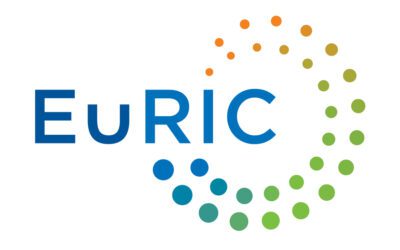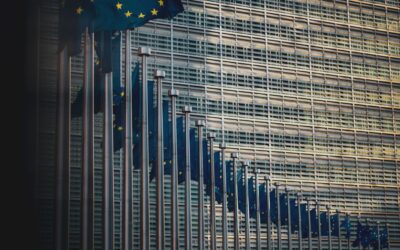Sandbag’s action
The European Commission has proposed a revision of the EU ETS, aligning it to the EU’s commitment to reduce emissions by at least 55% by 2030. However, despite a sudden frenzy in the carbon market suggesting that covered sectors are expected to face higher abatement costs, Sandbag calculated that, without much deeper reforms, the ETS is likely to remain hampered by surplus allowances which will let these sectors exceed their cap by up to 45%, with industry still able to increase its emissions for the next 10 years. As always, updating the EU ETS will be a long process, and Sandbag will be using our modelling tools and data analysis expertise to assess the different policy options and advise on the best way for the EU ETS to drive decarbonisation.
Coming soon: carbon price calculator!
Our unique messages
Details can be found in our report on ETS reform and in our feedback document to the Commission’s public consultation here.
Increase Ambition
The EU ETS has ignored industrial decarbonisation for too long and assumed all the effort will be borne by the power sector. We are currently developing an interactive tool which will demonstrate that industrial abatement is affordable before 2030 and allows to increase the scheme’s ambition without causing a carbon price hike.
Reduce the MSR Thresholds
The Market Stability Reserve has been an important tool for reducing the surplus of allowances in the EU ETS, but still allows huge amounts to remain, guided by the thresholds. We recommend reducing the MSR thresholds down to zero and 100 million for low and high thresholds respectively. These thresholds were set to accommodate hedging by power utilities, but we know that hedging only involves the futures market and does not require actual permits to exist at the time of transaction.
Set a Condition to the Release from the 'Reserves'
There are several ‘reserves’ which can release allowances into the market: the New Entrants Reserve, the Market Stability Reserve, the allowances not allocated for free in earlier years which are kept available in the later years, and the reserve of 25 million allowances carried over from Phase III made available to Greece. In total, up to 1.3 billion allowances can be used in excess of the cap. In any year, these reserves should not release more allowances than they absorb if the previous year’s emissions exceeded the cap.
Rebase the Cap
We’ve been saying it since 2016 and it’s now starting to sink in: the EU ETS cap needs to be brought in line with current emission levels in order for the system to be effective. Sandbag pioneered this concept and coined the term years ago. We are pleased to have gained traction, to the point that the option is now on the table, but the fight is not over yet.
Reform the Heat Benchmark
The benchmark for Combined Heat & Power (CHP) installations is currently based on the average intensity of gas plants, which does not match the reality of many CHP plants running on biomass. The heat benchmark should be changed to reflect the 10% most efficient plants, as is the case in other industrial sectors.
Reform the Benchmark System
We are campaigning to abolish free allocation as a Carbon Border Adjustment Mechanism is introduced. But in the meantime, free allocation remains, regulated by benchmarks. We believe that the benchmark system needs serious reforms, as it distorts competition, is out of touch with a net zero target, may even be out of touch with current industrial reality, hampers the Innovation Fund’s effectiveness and lacks transparency. More information here.
Improve Transparency
A lot of information on emissions trading is inaccessible to civil society, policymakers and even to industry. We campaign for more disclosure of the information that is deliberately with held by the European Commission, for example on the emission intensity level of industrial facilities covered by the EU ETS. We also work at making information more symmetrical and publicly available, for example on EU ETS supply/demand balance and industry abatement potential, through online tools and publications.
Reform or Reduce the Innovation Fund
We believe that the IF, as currently designed, is the wrong instrument to help reaching net zero. For example:
- The eligibility of a project is linked to its emissions avoidance compared to the EU ETS benchmarks, but year after year, those benchmarks are drifting behind state-of-the-art and are definitely far from zero-emissions.
- the IF doesn’t take into account lifecycle emissions, so the substitution of grey by green hydrogen in oil refining is considered as 100% avoidance even though most of the emissions will remain due to the fuel produced.
- The amount projects receive is proportional to a measure of their gap to profitability called ‘relevant costs’, however the definition is so vague that even perfectly profitable projects can get funded. The IF is likely to just help large companies to save millions in R&D budget, at the expense of measures like circularity which do need public money.
- The amount of avoided emissions calculated to rate the projects is only the one claimed by the applicant, which makes big lies pay.
Past successes
Carbon pricing
Carbon pricing creates an economic incentive to reduce emissions wherever this can be done at a cost below the carbon price. A carbon price, depending on its level, will help drive investment in low carbon technologies and power generation.
Carbon pricing broadly takes two forms, a carbon tax and a cap-and-trade approach where emitters have to buy permits to be able to emit. With a tax, the price is known in advance but the amount of reductions is uncertain. With a cap-and-trade scheme, the reductions are set by the cap, but the price varies with supply and demand. Hybrids or mixtures of these approaches are sometimes used in practice.
In Europe there is a mixture of carbon pricing measures in place or being developed: the EU Emissions Trading System (ETS), a cap-and-trade scheme which applies to large industrial plants; a Europe-wide cap-and-trade scheme allowing the transfer of emission reductions between Member States; and national carbon prices, usually in the form of a tax, in a number of countries.
Sandbag works to influence these policies to ensure they are robust and deliver a carbon price that drives emission reductions in the covered sectors.
Sandbag works to influence the European Commission, European Parliament, key Member States and other major stakeholders and to raise public awareness of and engagement in the policy making process.
March 2021: the European Parliament votes for rebasing of the EU ETS cap
The EP’s own initiative report on the Carbon Border Adjustment Mechanism underlines that the ETS reform should include “a rebasing of the cap”. Sandbag was the first to coin the term, and introduce the concept of rebasing, in its 2016 report “Getting in Touch with Reality”. We have since then relentlessly promoted this idea with policymakers.
August 2020: European Commission considers abandoning CORSIA and an immediate phase-out of emission allowances for aviation.
In its inception impact assessment and public consultation on reviewing the EU ETS rules for aviation, the Commission is considering several options for how aviation emissions will be charged in the future. Several of the options involve turning away from the international CORSIA mechanism and including international aviation emissions under the EU ETS. Sandbag has highlighted the problems with the CORSIA mechanism since its inception.
June 2020: the public consultation on EU ETS reform considers options proposed by Sandbag
The Commission’s consultation document proposes ‘rebasing of the cap’ as one of several ways to strengthen the scheme’s 2030 ambition. It also proposes that ‘the carbon leakage framework should be replaced by a Carbon Border Adjustment Mechanism’, which is exactly what Sandbag had been defending for a long time, e.g. in our 2017 report The Cement Industry of the Future. Most of the options proposed to revise the free allocation benchmark system are also in line with recommendations we wrote in our 2018 Barriers to Industrial Decarbonisation report. These are encouraging signs that upcoming ETS reforms will take into account the insights of Sandbag’s many years of data analysis.
The EU Emissions Trading System
The EU ETS applies a legal annual caps decreasing over time, on around 40% of Europe’s greenhouse gas emissions, mainly from power generation and heavy industry. It creates tradable emissions rights and delivers a carbon price.
Since its creation, the EU ETS has been weakened by a surplus of allowances and low prices. As a result, it failed to provide the appropriate signals either for immediate emissions reductions, or long term investment towards a low carbon economy.
Sandbag was originally set up to focus on scrutinising and reforming the EU ETS. We’ve had many successes, but there is much more to do. We focus our work on strengthening the EU ETS, especially looking to achieve a more appropriate level of allowance supply.
To this end, we have developed tools such as the EU ETS Dashboard and the EU ETS Simulator to help decision makers understand the scheme and its proposed reforms in more detail.
Latest publications on Carbon Pricing
Free Allocation Needs to Incentivise Circularity for the EU to Reach Net Zero
Open letter: Free allocation needs to incentivise circularity for the EU to reach net zero To: DG CLIMA - Mr Heiko Kunst Chair of the Expert Group on Climate Change Policy Dear Mr Kunst, We are writing to you on behalf of the European steel scrap recycling...
Lost opportunity of carbon market reform leaves a lot to fix in ancillary laws
On 13 December 2022, the European Commission, Council and Parliament reached a provisional agreement on the Carbon Border Adjustment Mechanism that will partly replace the free allocation of emissions permits to polluters covered by its carbon market. This marks the...
What’s new in the ETS trilogues? Benchmark revisions (or not!)
This weekend, the European Commission, Parliament, and Council are set to finalise an important reform of the EU’s carbon market in the final round of their “trilogue” (trilogues are informal tripartite meetings on legislative proposals between representatives of the...
An Export Solution for a Faster CBAM Phase-in
A Carbon Border Adjustment Mechanism (CBAM) has been proposed by the European Commission as an alternative to the measures under the EU ETS that currently address the risk of carbon-intensive industries relocating to countries with no carbon pricing (carbon leakage),...
Spend Smarter: A bit of advice on climate innovation financing
Report | Spend Smarter: A bit of advice on climate innovation financing Download the report Currently, most EU-managed climate innovation subsidies go to innovation (through the Innovation Fund). The EU’s Innovation Fund, launched in 2020, is one of the world’s...
Our concerns regarding ETS and CBAM legislative texts
We have strong concerns regarding the legislative texts on the revision of the Emissions Trading Scheme (ETS) and the Carbon Border Adjustment Mechanism (CBAM), presented by the European Commission, Council and Parliament. All three bodies have proposed to extend the...

WHAT WE DO
TOOLS
PUBLICATIONS
NEWSLETTER
Mundo-b Matogné. Rue d'Edimbourg 26, Ixelles 1050 Belgium.
Sandbag is a not-for-profit (ASBL) organisation registered in Belgium under the number 0707.935.890.
EU transparency register no. 277895137794-73.
VAT: BE0707935890.









